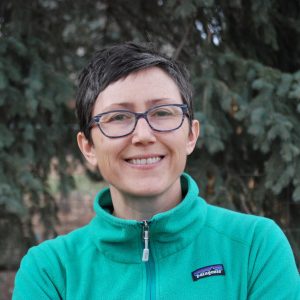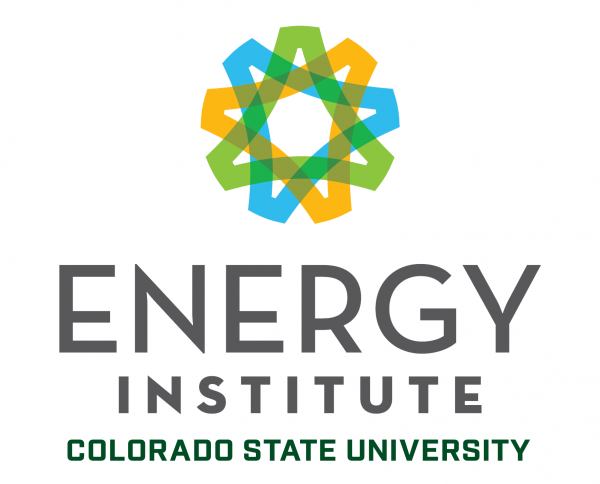Date/Time
Date(s) - July 7, 2021 - September 19, 2021
10:00 am - 6:00 pm
Presented in collaboration with the
Energy Institute at Colorado State University
Part of the worldwide art project
EXTRACTION: Art on the Edge of the Abyss
Gregory Allicar Museum of Art, Colorado State University, Fort Collins, Colorado, USA
Resource extraction created the world as we know it. Without fossil fuels, we would not have computers, airplanes, or electricity. Yet, these technologies have come at a severe cost to global ecosystems, climate stability, and human health. Some of the most complex and diverse environments—and the animal and human communities who inhabit them —have been sacrificed for the mobility and comfort of the industrialized world. Every light we turn on implicates us in this complex paradigm.
In the vernacular of extraction industries, “reclamation” signifies restoring post-extraction landscapes to a “natural” state, or even better, to an economically viable one. Lego-like terraforming processes that give way to the seeding of monocrops are par for the course. Often the work of reclaiming extraction sites falls on the shoulders of the ex-traction companies themselves, with aid from state and federal governments. Engineers and scientists use computer modeling and the latest in agricultural science to reenvision the mine site post-extraction. Key decision makers consider future use and development. It is all very practical.
Reclamation: Recovering Our Relationship with Place asks what might happen if artists instead of mining companies, engineers and scientists (or artists working alongside engineers and scientists) are given the reigns to envision a post-extraction world. By nature, artists are visionaries. They can challenge cultural preconceptions and even our best logic. In doing so, artists propose possibilities that at times feel far-fetched, or even ludicrous. Their work is not subject to scientific peer-review, economics or law. It is the disassociation from such constraints that allow artists to shed light on new ways of thinking and opening the door to hope. It is often artists that propose the clearest view forward.
The artists featured in this exhibition were chosen because their forward-thinking perspectives are both visionary and vital. They use humor, poetry, beauty and science to present a future where the land reasserts its rights and the extraction of fossil fuels is a dark and distant memory. Do not misunderstand—this isn’t a world that disaffirms humanity. The artists featured in Reclamation are keenly aware that humans are an integral part of the great ecosystems of the earth. Human rights are directly entwined with the rights of the land. The way forward implies human action.
Although processes of healing and repair are essential on a global scale, this exhibition focuses on reclamation of land currently within the political borders of the United States. Artistic voices from various regions represent diverse perspectives and localized issues. The artists in the exhibition embody the West, North, Southwest, Pacific Coast, Appalachia and the Eastern Seaboard. Their work spans the realms of painting and drawing, performance, video, sculpture and installation.
– Erika Osborne, 2020

Erika Osborne, exhibition curator
Professor Erika Osborne (BFA, University of Utah; MFA, University of New Mexico) is an Associate Professor in the Department of Art and Art History at Colorado State University, teaching painting and interdisciplinary field courses addressing art and the environment. She also curated the museum’s 2017 exhibition of a project by artist David Brooks, Case Study: Weld County, CO, which examined the proximity of fracking sites and residences.
Artists included in Reclamation: Recovering Our Relationship with Place
Matt Kenyon is a new media artist who teaches at the University of Buffalo. Under the auspices of SWAMP (Studies of Work Atmosphere and Mass Production), Kenyon focuses on critical themes addressing the effects of global corporate operations, mass media and communication, military- industrial complexes, and general meditations on the liminal area between life and artificial life, using a wide range of media including custom software, electronics, and mechanical devices. Kenyon’s Super Major is slated for inclusion.
Cannupa Hanska Luger is a New Mexico based multidisciplinary artist who uses social collaboration in response to timely and site-specific issues. Cannupa’s Future Ancestral Technologies will be included in Reclamation, which he describes as “an approach to making art objects, videos, and performance with the intent to influence global consciousness. This Indigenous-centered science fiction uses creative storytelling to radically reimagine the future. Moving sci-fi theory into practice, this methodology conjures innovative life-based solutions that promote a thriving Indigeneity.”
Mary Mattingly founded Swale, an edible landscape on a barge in New York City. Docked at public piers but following waterways common laws, Swale circumnavigates New York’s public land laws, allowing anyone to pick free fresh food.
The work of Beth Stephens and Annie Sprinkle focuses on developing the ecosex movement through art, theory, practice and activism. Beth is an Art Professor at UC Santa Cruz, and Annie has a Ph.D. in Human Sexuality. “By shifting the metaphor from ‘Earth as mother’ to ‘Earth as lover’ we aim to entice people to develop a more mutual, pleasurable, sustainable, and less destructive relationship with the environment.”
John Sabraw is a Professor of Art at Ohio University where he is Chair of the Painting + Drawing program. Examples from his Chroma series will be included in Reclamation: “These paintings seek to express the sublimity of nature, but also the fragility of our relationship with it. . . . I have partnered with Guy Riefler to extract toxic acid mine drainage (AMD) from polluted streams and turn it into paint pigment. Once the pigment is sold on a commercial scale, revenue will be invested back into the streams’ remediation.”
Cedra Wood’s Plot drawings will be included in the exhibition: “These drawings, made to scale, grew out of an experience at the Kluane Lake Research Station in the Yukon. Tagging along with biologists in the mountains near the world’s largest nonpolar icefield, I was struck by their practice of meticulously observing small plots of land, and using that data to draw conclusions about the larger world. I chose my own square meter of ground to observe and document…”
This exhibition is part of EXTRACTION: Art on the Edge of the Abyss, “a multimedia, multi-venue, cross-border art intervention” that investigates the extractive industry in all its forms, from mining and drilling to the reckless exploitation of water, soil, trees, marine life, and other natural resources. The project exposes and interrogates extraction’s negative social and environmental consequences, from the damage done to people, especially indigenous and disenfranchised communities, to ravaged landscapes and poisoned water to climate change and its many troubling implications.
A constellation of simultaneous and overlapping exhibits, installations, performances, site-specific work, land art, street art, publications, and cross-media events, EXTRACTION will take place in multiple locations throughout the U.S. and abroad during the Summer of 2021. The project will be de-centered, non-hierarchical, and self-organizing, which means that artists, art venues, curators, and art supporters will participate and collaborate as they see fit, including helping the project expand geographically.
Prominent writers, critics, historians, educators, environmentalists, and other experts have been enlisted as advisors, to provide related texts, and to help us forge affiliations with non-art organizations. The Nevada Museum of Art, a national leader in the exhibition, collection, study, and promotion of environmentally related art, has agreed to archive all project documentation.
Support for this project has been generously provided City of Fort Collins Fort Fund, by the FUNd Endowment at CSU, and with support from Colorado Creative Industries. CCI and its activities are made possible through an annual appropriation from the Colorado General Assembly and federal funds from the National Endowment for the Arts.
This project was also made possible, in part, through a grant from the Lilla B. Morgan Memorial Endowment, which works to enhance the cultural development and atmosphere for the arts at Colorado State University. This fund benefits from the generous support of all those who love the arts.
![]()

Press: Exhibition Media Toolkit
